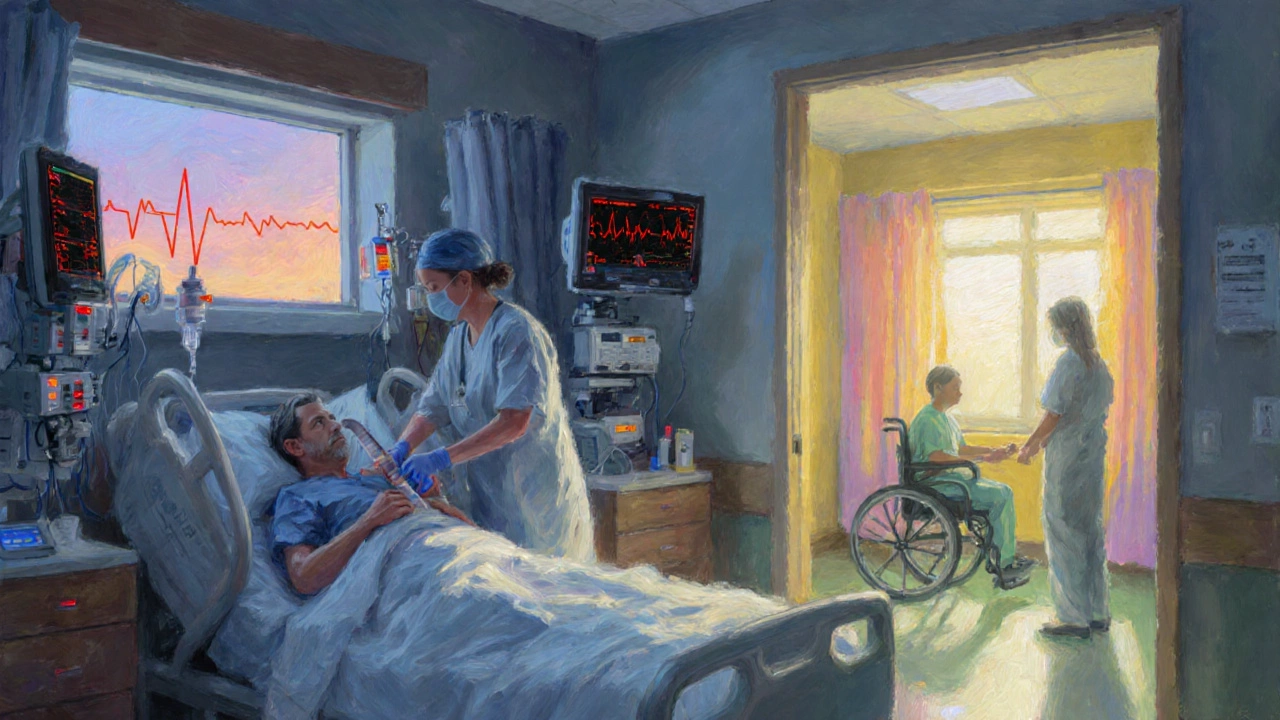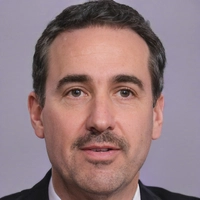Heart Surgery Stay Calculator
Estimate your expected hospital stay after heart surgery based on procedure type and key factors. This tool uses average data from major medical centers worldwide.
Your Estimated Hospital Stay
Discharge Criteria
- Stable vital signs
- Pain manageable with oral medication
- Able to walk short distances
- Understanding of medications and follow-up
When a loved one comes home from Heart Surgery is a surgical procedure that repairs or replaces damaged heart tissue or valves, the biggest question on most families’ minds is: how long will they stay in the hospital? Knowing the typical timeline helps set realistic expectations, plan for post‑op care, and avoid unnecessary anxiety.
Key Takeaways
- The overall average stay after major heart surgery is 5-7 days, but it varies by procedure.
- Coronary artery bypass grafting (CABG) usually means 6-8 days; valve replacement averages 5-6 days.
- Minimally invasive techniques can cut the stay to 3-4 days, while heart transplants often require 10-14 days.
- Age, comorbidities, ICU length, and hospital type are the biggest drivers of variation.
- Clear discharge criteria and early rehab accelerate a safe release.
Understanding Length of Stay
Length of Stay refers to the total number of days a patient remains admitted, from admission to discharge and is a key metric for hospitals, insurers, and patients alike. In cardiac care, two phases dominate the count: the intensive care unit (ICU) stay and the regular ward recovery.
Average Stay by Surgery Type
Different heart procedures have distinct recovery pathways. Below is a snapshot of the most common surgeries performed in 2024‑2025 across major centers in the United States, Europe, and India.
| Procedure | Average Total Days | ICU Days | Key Factors Influencing Stay |
|---|---|---|---|
| Coronary Artery Bypass Grafting (CABG) | 6-8 | 2-3 | Number of grafts, diabetes, age |
| Heart Valve Replacement | 5-6 | 1-2 | Valve type (mechanical vs. tissue), renal function |
| Minimally Invasive Cardiac Surgery (MICS) | 3-4 | 0-1 | Surgeon experience, patient’s BMI |
| Heart Transplant | 10-14 | 4-6 | Immunosuppression protocol, organ size match |
| Aortic Aneurysm Repair | 7-9 | 2-3 | Repair method (open vs. endovascular), hypertension |
These numbers are averages; individual experiences can be shorter or longer depending on personal health and hospital protocols.

Factors That Influence Hospital Stay
Even within the same procedure, several variables push the stay up or pull it down:
- Age and frailty: Older patients often need extra monitoring and slower mobilization.
- Comorbid conditions: Diabetes, chronic kidney disease, or chronic lung disease increase complication risk.
- ICU length: A Intensive Care Unit provides round‑the‑clock monitoring for critical post‑operative patients stay of more than 48 hours usually adds 1‑2 days to the total stay.
- Complications: Bleeding, arrhythmias, or infections automatically extend the hospital course.
- Hospital type: Teaching hospitals often have longer stays because of teaching rounds, while specialized cardiac centers may discharge faster due to streamlined pathways.
- Geographic norms: In the United States the average is slightly higher than in India, where cost pressures and efficient protocols shave a day or two off the stay.
Typical Timeline: From Admission to Discharge
Understanding the steps can make the waiting period feel less mysterious.
- Pre‑op assessment (Day-1 to 0): Labs, imaging, and anesthesia review. Patients often stay overnight before the scheduled surgery.
- Surgery day (Day0): Procedure lasts 3-6hours depending on complexity. Patient is transferred directly to the ICU.
- ICU recovery (Day1‑2): Vital signs are closely watched, breathing support weaned, and pain managed. Early ambulation begins as soon as stable.
- Step‑down to ward (Day3‑4): Patient moves to a regular cardiac unit, starts light physical therapy, and begins a heart‑healthy diet.
- Discharge planning (Day5‑7): Nurses review Discharge Criteria the set of clinical milestones indicating a patient can safely leave the hospital - stable vitals, adequate pain control with oral meds, ability to walk short distances, and education on medication and follow‑up.
- Post‑discharge follow‑up (Day7‑30): Outpatient visits, cardiac rehab, and remote monitoring ensure a smooth transition.
Preparing for Discharge & Post‑Hospital Recovery
Leaving the hospital doesn’t mean the healing stops. Here’s a quick checklist for patients and caregivers:
- Confirm medication list and understand each drug’s purpose.
- Arrange transportation - many hospitals limit visitors after discharge.
- Set up a home‑care nurse or physical therapist if mobility is an issue.
- Schedule the first cardiology follow‑up within 7‑10 days.
- Know the warning signs: fever, worsening shortness of breath, swelling in legs, or new chest pain.
Adhering to a cardiac rehabilitation program can shorten the overall recovery window by up to 30% and dramatically improve long‑term outcomes.

Medical Tourism and Length of Stay
Patients traveling for affordable cardiac care often ask whether they’ll stay longer abroad. In reputable Indian and Southeast Asian centers, the average stay for a standard CABG is still 6‑7 days, mirroring global averages. The difference lies in pre‑ and post‑travel logistics - many tourists add a few days before departure for acclimatization and after return for follow‑up at home.
Bottom Line
While the average hospital stay heart surgery hovers around a week, the exact number depends on the type of surgery, the patient’s health profile, and the hospital’s discharge pathway. By understanding the typical timeline and the factors that can stretch or shrink it, patients can better prepare mentally, financially, and logistically for the road ahead.
Frequently Asked Questions
How long does a typical CABG patient stay in the hospital?
The average total stay for coronary artery bypass grafting is 6-8 days, with 2-3 days in the ICU. Patients with fewer grafts and no diabetes often leave closer to six days.
Can minimally invasive heart surgery reduce the hospital stay?
Yes. Minimally invasive cardiac surgery (MICS) typically shortens the stay to 3-4 days because it avoids a large chest incision, reduces pain, and cuts ICU time to less than 24hours.
What are the main discharge criteria after heart surgery?
Patients must have stable heart rhythm, no fever, pain manageable with oral meds, be able to walk a short distance with minimal assistance, and demonstrate understanding of medication and follow‑up appointments.
Why do some patients stay longer than the average?
Complications such as bleeding, infection, arrhythmias, or pre‑existing conditions like chronic kidney disease can extend the stay. Age and frailty also play a significant role.
Is it safe to leave the hospital early if I feel fine?
Leaving before meeting all discharge criteria can increase the risk of readmission. Always follow the medical team’s checklist and discuss any concerns before signing out.






